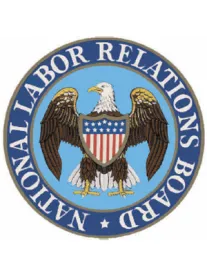The General Counsel of the National Labor Relations Board has decided to accept electronic signatures in support of a showing of interest, effective immediately. In a September 1, 2015, memorandum (issued on September 2), General Counsel Richard Griffin wrote, “[a]s is reflected in the guidelines which follow, I have determined that the evidentiary standards that the Board has traditionally applied to handwritten signatures apply equally to electronic signatures and that it is practicable to accept electronic signatures in support of a showing of interest if the Board’s traditional evidentiary standards are satisfied.” Memorandum GC 15-08 (September 1, 2015).
As part of the Board’s quickie election rulemaking, the Board determined its regulations are sufficient to permit the use of electronic signatures to support a showing of interest. The Board also decided that Congress wanted “Federal agencies, including the Board, [to] accept and use electronic forms and signatures, when practicable—i.e., when there is a cost-effective way of ensuring the authenticity of the electronic form and electronic signature given the sensitivity of the activity at issue, here the showing of interest.”
Based on this, Griffin wrote, the Board charged him with the responsibility to “determine whether, when, and how electronic signatures can practicably be accepted” and to “issue guidance on the matter.”
Griffin decided that, to be acceptable, a showing of interest supported by an electronic signature had to contain several features. The features are imposed in order “to establish its authenticity and provide a mechanism for the Agency to investigate allegations of forgery or fraud where appropriate.”
According to the memorandum:
-
Submissions supported by electronic signature must contain the following:
-
the signer’s name;
-
the signer’s email address or other known contact information (e.g., social media account);
-
the signer’s telephone number;
-
the language to which the signer has agreed (e.g., that the signer wishes to be represented by ABC Union for purposes of collective bargaining or no longer wishes to be represented by ABC Union for purposes of collective bargaining);
-
the date the electronic signature was submitted; and
-
the name of the employer of the employee.
-
A party submitting electronic digital signatures must submit a declaration (1) identifying what electronic signature technology was used and explaining how its controls ensure: (i) that the electronic signature is that of the signatory employee, and (ii) that the employee herself signed the document; and (2) that the electronically transmitted information regarding what and when the employees signed is the same information seen and signed by the employees.3
-
When the electronic signature technology being used does not support digital signatures that lend itself to verification as described in paragraph 2, above, the submitting party must submit evidence that, after the electronic signature was obtained, the submitting party promptly transmitted a communication stating and confirming all the information listed in la through lf above (the “Confirmation Transmission”).
-
The Confirmation Transmission must be sent to an individual account (i.e., email address, text message via mobile phone, social media account, etc.) provided by the signer.
-
If any responses to the Confirmation Transmission are received by the time of submission to the NLRB of the showing of interest to support a petition, those responses must also be provided to the NLRB.
-
Submissions supported by electronic signature may include other information such as work location, classification, home address, and additional telephone numbers, but maynot contain dates of birth, social security numbers, or other sensitive personal identifiers. Submissions with sensitive personal identifiers will not be accepted and will be returned to the petitioner. They will not be accepted until personal identifiers are redacted.
General Counsel Griffin said these requirements are “more stringent” than what is currently required for non-electronic signatures. He noted that, at present, signature lists need not contain any personal contact information. In defense of the electronic signature requirements, however, he wrote that “the contact information (email address, phone number or other social media account) is easy to obtain electronically from the signer and will enable the NLRB to promptly investigate forgery or fraud, where appropriate. Moreover, the Confirmation Transmission will allow an employee, who receives the notification but did not actually intend to sign the document, with the means to alert the Agency, the employer, a union, or others that he or she did not, in fact, electronically sign a showing of interest.”
Electronic signatures could be in different forms. As examples, the General Counsel said “an email sent soliciting information and support to which the signer replied” is acceptable, as will be “a copy of a webpage soliciting information along with a spreadsheet showing data received after the electronic signer clicked a ‘Submit’ button.”
The General Counsel’s decision does not come as a surprise in light of the Board’s quickie election rule and its desire to facilitate union organizing. This change will make it easier for unions to convince employees to express their interest in unions without fear of being “discovered” by their supervisors. In the privacy of their homes, employees will be able “sign up” for the union.
Employers, on the other hand, will have a more difficult time getting employees to weigh the arguments for and against union representation. Supervisors will have fewer opportunities to tell the employee the “other side of the union story” before the employee decides whether to sign.







 />i
/>i
